
In the nation of Myanmar (Burma), certain customs are associated with the institution of marriage.

In the nation of Myanmar (Burma), certain customs are associated with the institution of marriage.
Most Burmese people find their own life partner, but sometimes they may have an arranged marriage conducted by their parents or a middleman. If the parents do not support the couple, they may get married in secret then after some time the parents might accept their marriage. Traditionally, when a man goes to ask a woman's parents to bless their marriage, he brings a gift to his future wife.
There are many superstitions regarding marriage in Myanmar. Tradition holds that those born on particular combinations of days of the week are not right for each other. For example: those born on Saturday would not be suitable for those born on Thursday. Likewise, Friday and Monday, Sunday and Wednesday, and Wednesday evening and Tuesday are all poor matches. If the couple is poorly matched, they will go to an astrologer and ask for help to avoid future difficulties. Astrologers also advise on the date and time of the ceremony, and the color of the wedding dress.
Polygyny is illegal in Myanmar.
The first step to a proper engagement is for the bride and groom's parents and chosen elders to be formally and publicly introduced at the bride's home or a public venue. During that time, both sides will discuss the details of the wedding. However close they are, the families will formally negotiate about the wedding. [1]
During the engagement celebration, the groom's family offers coconut, banana, and pickled tea leaves on a tray to the bride's family home for the household nat (spirit).
Historically, marriages could be announced to the public by letting people from seven houses on either side of the wedded couple's house know about it. Nowadays, people prefer to celebrate their wedding ceremony impressively among their community. Some couples sign the marriage certificate at a courthouse and some invite a judge to their home. Generally, monks are invited to home in rural areas. In metropolitan areas, families go monasteries. The couple offers food to the monks and listen to a sermon. [1]
The best months to celebrate the wedding ceremony are April, May, June, October, November, and February. If a couple marries during these months, tradition holds that they will have a prosperous and long-lasting relationship. Couples try to avoid marrying during Buddhist Lent, from July to September. [2]
After marriage, a couple may live with their in-laws for a short time or for a lifetime. Household chores are carried out by women. [3]
Husbands are traditionally “rice winners”; however, wives manage the family income. Sometimes wives supplement their husband's income by running a house-store, dress-making or selling something. When a Burmese woman marries, she does not need to transfer her property to her husband.
According to the United Nations Population Fund, divorce rates in Myanmar are low: 3 per cent of women and 2 per cent of men are divorced or separated. [4] If a married woman divorces, she can keep what she has brought to the marriage. When a husband dies, everything he owns goes to his wife. Only after she dies does the property go to the children. [1]

Marriage in Judaism is the documentation of a contract between a Jewish man and a Jewish woman in which God is involved. In Judaism, a marriage can end either because of a divorce document given by the man to his wife, or by the death of either party. Certain details, primarily as protections for the wife, were added in Talmudic times.

A wedding is a ceremony where two people are united in marriage. Wedding traditions and customs vary greatly between cultures, ethnic groups, races, religions, denominations, countries, social classes, and sexual orientations. Most wedding ceremonies involve an exchange of marriage vows by a couple, presentation of a gift, and a public proclamation of marriage by an authority figure or celebrant. Special wedding garments are often worn, and the ceremony is sometimes followed by a wedding reception. Music, poetry, prayers, or readings from religious texts or literature are also commonly incorporated into the ceremony, as well as superstitious customs.

An engagement or betrothal is the period of time between the declaration of acceptance of a marriage proposal and the marriage itself. During this period, a couple is said to be fiancés, betrothed,intended, affianced, engaged to be married, or simply engaged. Future brides and grooms may be called fiancée (feminine) or fiancé (masculine), the betrothed, a wife-to-be or husband-to-be, respectively. The duration of the courtship varies vastly, and is largely dependent on cultural norms or upon the agreement of the parties involved.

Traditional Chinese marriage is a ceremonial ritual within Chinese societies that involves not only a union between spouses but also a union between the two families of a man and a woman, sometimes established by pre-arrangement between families. Marriage and family are inextricably linked, which involves the interests of both families. Within Chinese culture, romantic love and monogamy were the norm for most citizens. Around the end of primitive society, traditional Chinese marriage rituals were formed, with deer skin betrothal in the Fuxi era, the appearance of the "meeting hall" during the Xia and Shang dynasties, and then in the Zhou dynasty, a complete set of marriage etiquette gradually formed. The richness of this series of rituals proves the importance the ancients attached to marriage. In addition to the unique nature of the "three letters and six rituals", monogamy, remarriage and divorce in traditional Chinese marriage culture are also distinctive.

Marriage in Korea mirrors many of the practices and expectations of marriages in other societies. Modern practices are a combination of millennia-old traditions and global influences.
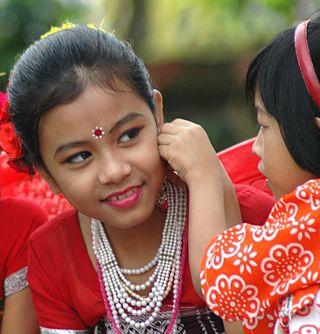
The Tripuri culture of North-East India has many distinctive features.
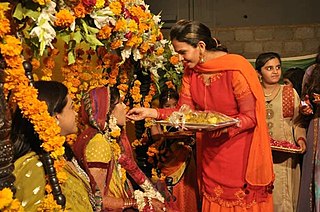
Marriage in Pakistan pertains to wedding traditions established and adhered by Pakistani men and women. Despite their local and regional variations, marriages in Pakistan generally follow Islamic marital jurisprudence. Marriages are not only seen as a union between a husband and a wife, but also an alliance between their respective families. These traditions extend to other countries around in the world where Overseas Pakistani communities exist.

Punjabi wedding traditions are a strong reflection of Punjabi culture with ritual, song, dance, food, and dress that have evolved over centuries.
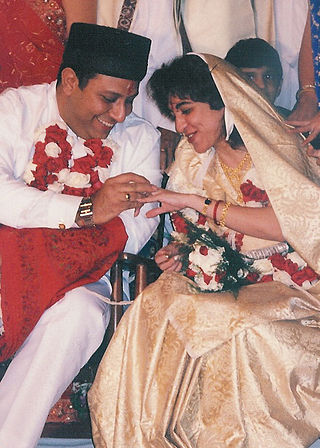
A Zoroastrian wedding is a religious ceremony in Zoroastrianism in which two individuals, a man and a woman, are united. In Zoroastrianism, marriage within the community is encouraged, and is greatly favored in religious texts. The following information will detail ceremony procedures and traditional processes for a Zoroastrian wedding.
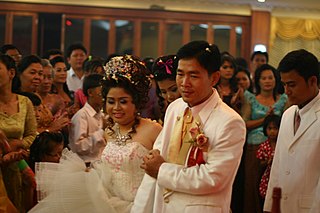
Courtship, marriage, and divorce in Cambodia are important aspects of family life. Customs vary as between rural and urban areas, with many city dwellers being influenced by western ideas. The choice of a spouse is usually undertaken by the families of young men and women, sometimes with the help of a matchmaker. A man usually marries between the ages of nineteen and twenty-five and a woman between sixteen and twenty-two.

The Bété are an Ivory Coast group with strong cultural and artistic links to the Dan, the We (Gwere) and the Guro, among others. The Bété are a tribe of the Kru ethnic group. There are 93 distinct subgroups within the Bété group.
In the United States and Canada, weddings follow traditions often based on religion, culture, and social norms. Most wedding traditions in the United States and Canada were assimilated from other, generally European, countries. Marriages in the U.S. and Canada are typically arranged by the participants and ceremonies may either be religious or civil. There is a tradition that the prospective bridegroom ask his future father-in-law for his blessing.
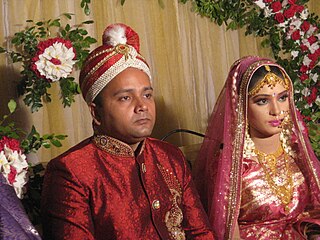
Muslim marriage and Islamic wedding customs are traditions and practices that relate to wedding ceremonies and marriage rituals prevailing within the Muslim world. Although Islamic marriage customs and relations vary depending on country of origin and government regulations, both Muslim men and women from around the world are guided by Islamic laws and practices specified in the Quran. Islamic marital jurisprudence allows Muslim men to be married to multiple women.
Bahaghara is a wedding ceremony performed by Odia Hindu people in the Indian state of Odisha. There are subtle differences in the rites observed by different castes. In Odia marriage rituals, the mother of the bridegroom does not take part in the ceremony. The Utkala Brahmins have their weddings only in the daytime, preferably at midday or in the morning, while the other caste weddings are done during the evening or night. There is the custom of sending betel nuts to family friends for inviting them to the marriage. The first invitation is sent to the family deity as a respect to the lord. Marriages in Odisha are mostly fixed and arranged by the parents. Marriages for serving or capturing is not common.

The Azerbaijani wedding tradition is one of the most significant and solemn family traditions of Azerbaijani people. It is multi-stepped, and is related to various compulsory rituals and traditions. Ancient Azerbaijani weddings reflect cycles of traditions, lasting for a long period of time, and need significant material costs.

Bride price, bride-dowry, bride-wealth, bride service or bride token, is money, property, or other form of wealth paid by a groom or his family to the woman or the family of the woman he will be married to or is just about to marry. Bride dowry is equivalent to dowry paid to the groom in some cultures, or used by the bride to help establish the new household, and dower, which is property settled on the bride herself by the groom at the time of marriage. Some cultures may practice both simultaneously. Many cultures practiced bride dowry prior to existing records.
Wedding customs in Ethiopia vary among the tribes of the country.
Weddings in Myanmar, considered auspicious occasions in Burmese culture, reflect various ethnic, religious, and regional traditions. Depending on an individual's family social economic status, personal preferences and titles held, Burmese weddings can be religious or secular, and extravagant or simple. Wedding expenses are covered by the groom's family. Myanmar is a predominantly Buddhist country, and many wedding customs and traditions are influenced by Buddhism.
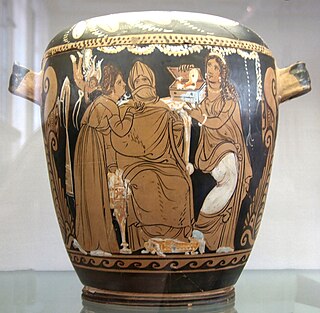
Marriage in ancient Greece had less of a basis in personal relationships and more in social responsibility, however it is important to note; the available historical records on the subject focus exclusively on Athens or Sparta and primarily on the aristocratic class. According to these records, the goal and focus of all marriages was intended to be reproduction, making marriage an issue of public interest. Marriages were usually arranged by the parents; on occasion professional matchmakers were used. Each city was politically independent and each had its own laws concerning marriage. For the marriage to be legal, the woman's father or guardian gave permission to a suitable man who could afford to marry. Daughters were usually married to uncles or cousins. Wintertime marriages were popular due to the significance of that time to Hera, the goddess of marriage. The couple participated in a ceremony which included rituals such as veil removal, but it was the couple living together that made the marriage legal. Marriage was understood to be the official transition from childhood into adulthood for women.